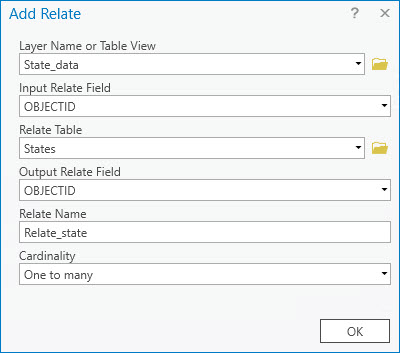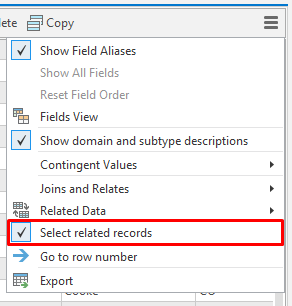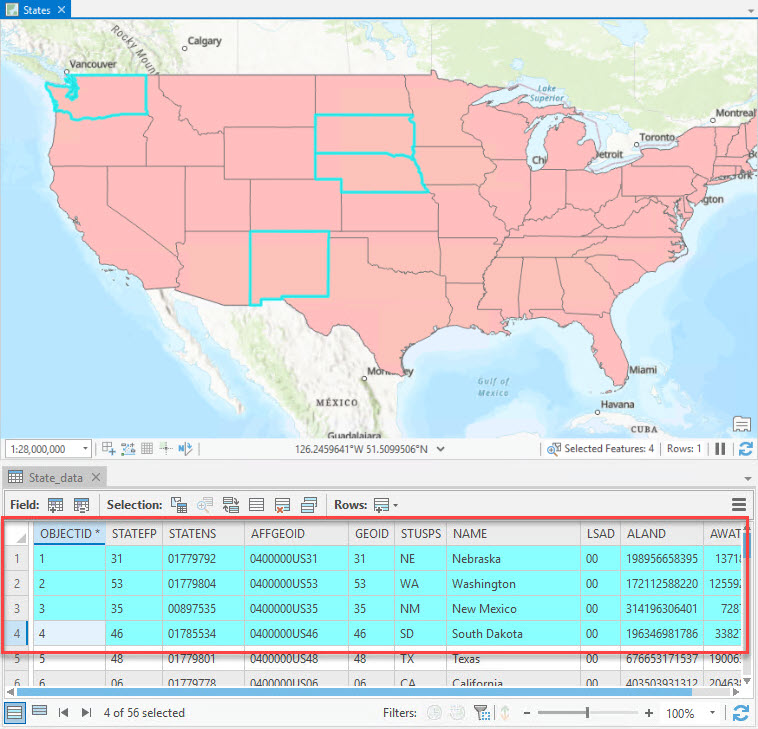HOW TO
Represent data in non-spatial tables on the map in ArcGIS Pro
Summary
Non-spatial tables (standalone tables) are used to store additional data that is related to spatial features. This data can be related to a spatial feature class such as counties, states, cities, and so forth. This article describes the steps to represent certain criteria or attributes based on a non-spatial table on the map in ArcGIS Pro.
Procedure
- In an ArcGIS Pro project, add the non-spatial table and the feature class related to the data in the table. For example, add the States feature class and the non-spatial table containing information on states.
- Relate the feature class to the non-spatial table with a one-to-many relationship.
- In the Contents pane, right-click the non-spatial table, and click Joins and Relates > Add Relate.
- In the Add Relate pane, ensure the non-spatial table is selected for Layer Name or Table View.
- Select the feature class for Relate Table.
- Select the fields for Input Relate Field and Output Relate Field.
- For Cardinality, select One to many. Click OK. These options are shown in the following image.

- Right-click the non-spatial table in the Contents pane, and click Open. Click the Table Options menu
 , and activate the Select related records option, as shown below.
, and activate the Select related records option, as shown below.

- In the non-spatial table, select one or more rows. The map highlights features that are related to the selected rows.

- Optionally, create a new layer based on the selection using one of the methods below:
- Right-click the feature class containing the selected feature, click Selection > Make Layer From Selected Features. This method creates a new layer on-the-fly in the Contents pane.
- Use the Copy Features tool to export the selected features and create a new feature class.
This process can be automated using ModelBuilder from the start, using the geoprocessing tools below:
- Add Relate tool
- Select Layer by Attribute tool
- Copy Features tool
Re-configure the following tools in the geoprocessing model to repeat the workflow based on another selection:
- Select Layer by Attribute tool
- Copy Features tool

Article ID: 000023150
- ArcGIS Pro 2 8 x
- ArcGIS Pro 2 7 x
- ArcGIS Pro 2 x
Get help from ArcGIS experts
Start chatting now

